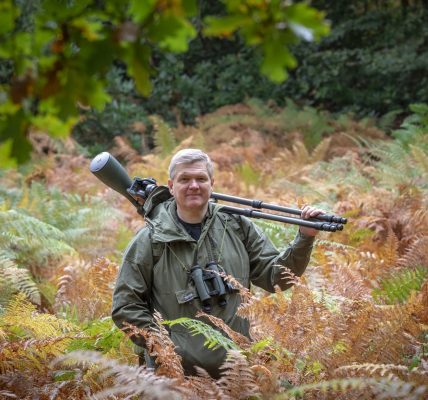The story of a railway society set up 85 years ago at Doncaster’s old grammar school and the memorabilia it holds
The story of a railway society set up 85 years ago at Doncaster’s old grammar school and the memorabilia it holds
It is one of Doncaster’s best-loved and most distinguished buildings.
But there are still very few in the town who know what the Art Deco clock tower of the old grammar school (founded in 1350, and now Hall Cross Academy) once housed.
The school was extended in the 1930s, and it was planned that the new tower would have a huge water tank at the very top that would increase both pressure and flow to classrooms and laboratories below.
It never worked. The school was left with an imposing structure that could be seen for miles, with a clock mechanism to one side, a pair of vast chambers, and nothing whatsoever to put in them.
It was a bit of a white elephant – until some imaginative pre-war schoolboys came up with an idea. Leader of the group was a student called Tony Peart, who proposed setting up a railway society. Since the town had close ties with the rail industry it proved a popular idea and the inaugural meeting of the Doncaster Grammar School Railway Society was held on May 6, 1936.
It was a decade when “railwaymania” was once again gripping the nation. Sir Nigel Gresley was designing record-beating engines just down the road at the LNER plant works opposite Doncaster Station and his new A4 class of locos were classics in their own right.
“There’s no denying that there was a lot of excitement in the town,” says Chris Barron, himself a former Doncaster Grammar School pupil. Chris still has the minute book that was opened for the initial after-school meeting, which has about 70 names in it.
“Since there were about 600 lads at the school in those days that shows that a fair percentage of them signed up as members,” he says. “They all paid a subscription of sixpence a week – quite a chunk out of your pocket money back then – and for that, amongst many other benefits, they got to go on as many school visits to workshops and rail sites of interest as could be arranged.”
It must have been an incongruous sight. “Can you imagine a gaggle of schoolboys, all wearing blazers, short trousers, with caps and ties, descending onto the floor of a working factory where steam engines were being constructed? There clearly wasn’t any health and safety issues back then. I’ve unearthed some of the permits and permissions that they had to obtain. This was all extra-curricular, outside school hours. But clearly the masters who accompanied them were enthusiasts as well.”
The society also started to collect rail memorabilia. The “big four” railway companies of the time – LNER, Southern, LMS and the GWR – had no sentiment over their rolling stock.
“When it came to the end of its useful life, it went for scrap, it was just chucked away, or melted down. So we had a rich seam of rail heritage to mine,” adds Chris.
It began with things like uniform buttons, old tickets, advertising bills and posters, all easily portable stuff. “Someone went to the then headmaster and asked if they could have a room in which they could build a model railway layout, and where they could store the small collection of ephemera. What did they get? The upper chamber of the tower.”
When war broke out in 1939 they had to vacate their space in order to allow in the fire-watching squads. But once the war was over, the society reclaimed the chamber and the collection of memorabilia slowly grew. “Tony went into teaching but he never ever lost his enthusiasm for the railways,” says Chris.
“He’d cycle everywhere picking up all sorts of memorabilia, much of it precariously balanced on the crossbar of his bike.”
In post-war Britain, though, the glamour of the railways began to fade. First came nationalisation and the distinctive coloured livery of the old companies vanished. Diesel and electric locomotives were then introduced over time, and for many railway fans they held little appeal.
“They didn’t have the same character the steam trains did. Alongside that, the grammar became a co-educational school and slowly a lot of the after-school activities dwindled away,” says Chris.
Despite this, the bare bones of the railway society survived and its collection remained in situ. Access to it was limited – not least by the fact that the upper chamber is reached by a complex of ladders and flat roofs and then by a winding iron staircase.
When Chris clapped eyes on the collection again after the best part of 50 years, the sight took his breath away. “It’s not a big room but it was absolutely crammed with memorabilia of all shapes and sizes. The only thing that they hadn’t got up there was an engine,” he says.
“How it was all manoeuvred up there is both a mystery and a miracle. I was told that a huge engine smoke box which stood there came up after one lad climbed a vertical ladder to a roof with it over his head, and resting on his shoulders. He couldn’t see a thing, and could only feel his way up, on the rungs.”
Chris, whose career in railway management had taken him around the UK before he returned with his wife to live in Campsall, near Doncaster, asked a rail expert to go with him to look at the train treasure, (which had never been satisfactorily catalogued), to give his opinion.
“He was rendered speechless,” recalls Chris. “We chatted and when he’d looked around for a while, he looked at me and said: ‘You do know that you’ve got at least £20m worth in this room and that there must be about 10,000 items here?’”
What had happened, of course, was that with the end of steam and the Beeching cuts to the British rail network came a nostalgia for the “good old days” and rail artefacts from that bygone era.
Today, art posters, which once changed hands for a couple of quid, can fetch hundreds, and sometimes thousands, of pounds at auction.
The society’s collection was offered to the National Rail Museum, in York. The NMR politely turned it down, saying there was “too much duplication” with artefacts it already held.
However, Chris, with typical schoolboy tenacity and determination, has found two new homes. Around 300 of its treasures will go on permanent display in Doncaster’s new museum, art gallery and library, due to open later this year, and all the rest is now in safe site storage in the town, where it will be catalogued, assessed and properly curated.
“Getting it all out was quite another matter. We had to bring in specialists, a firm who specialise in moving objects of historic interest and value,” says Chris, who is now one of the four trustees of the collection.
“I admit I got very emotional. When it was finally empty, it was very strange with the dusty outline of things that had been on the walls.”
Now, though, the collection will have a smart new home and when people finally visit the new museum they will be faced with a gleaming nameplate from a locomotive. Fittingly the name says: “Doncaster”.
“Sorry to tell you,” says Chris with a smile. “It wasn’t named after the town at all, but for a racehorse… just another fragment of railway history.”










